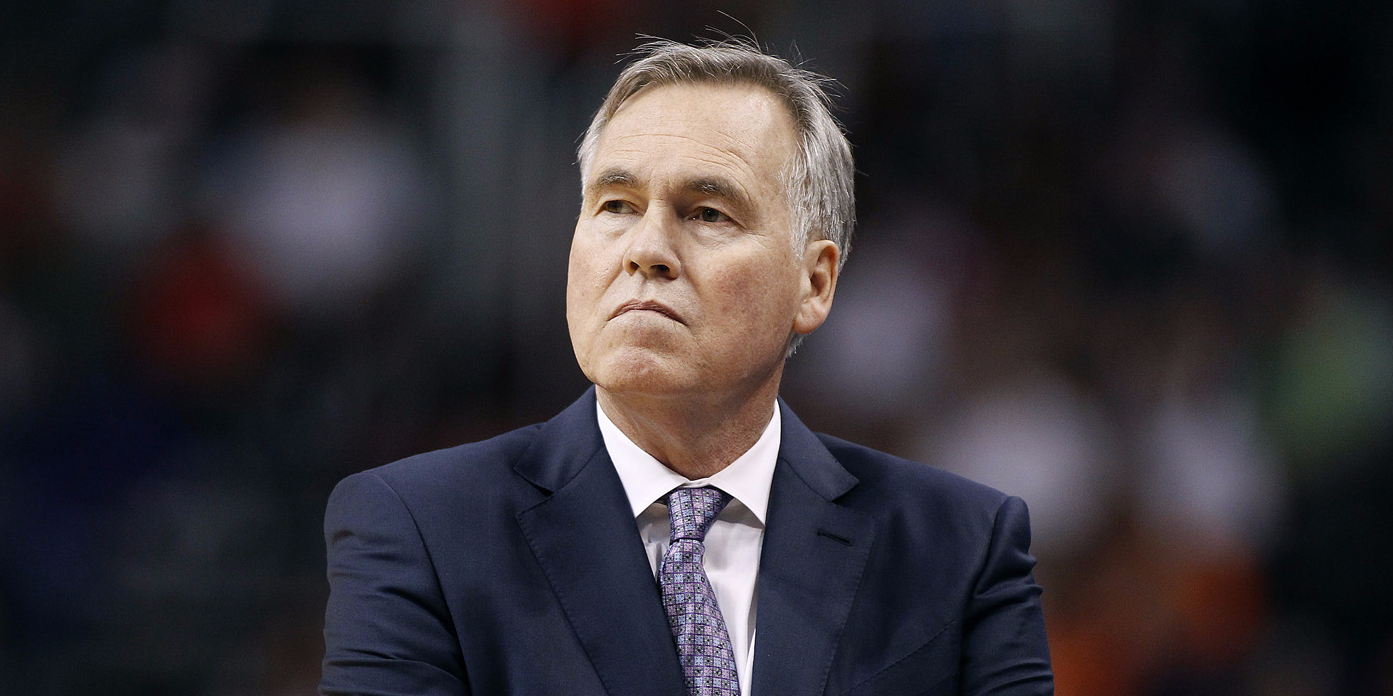- The NBA has been evolving to “small ball” for years as teams value shooting, spacing, and versatility more. The Houston Rockets took it to an extreme on Tuesday by playing some lineups in which the tallest player was just 6-foot-8. Expect to see more of this around the NBA as teams move away from traditional positions.
The Houston Rockets beat the Golden State Warriors, 123-122, on Tuesday after Kevin Durant’s game-winning shot attempt was released moments too late.
The game was a high-scoring affair with two of the NBA’s most dynamic offenses combining for 31 made three-pointers on 71 attempts.
For the Rockets, the onslaught of three-pointers and offensive explosion appeared to be part of a very deliberate design by D’Antoni.
For years, the NBA has been evolving toward “small ball,” which places a great emphasis on shooting, ball-handling, and positional versatility, eschewing lumbering big men for smaller, more skilled players. But on Tuesday, the Rockets took it to another level.
The Rockets played just eight players against the Warriors and only one of them, Clint Capela, could be considered a natural center. When Capela sat, the Rockets turned to either 6-foot-10 power forward Ryan Anderson at center, or even more drastically, used a platoon of the 6-foot-8 Luc Mbah a Moute and 6-foot-6 P.J. Tucker at center.
It appeared to work, too. Capela played 18 minutes and had a plus/minus of -23, the worst mark of any Rockets player. Meanwhile, Anderson, Tucker, and Mbah a Moute were all net positives in the game.
This wasn't a forced decision by D'Antoni. He could have turned to Nene, a deft offensive center off the bench, but instead used three wings to man the center position to increase the Rockets' spacing and switchability on defense.
Look at the spacing the Rockets found when using Tucker and Mbah a Moute as their big men. This Rockets lineup used five shooters, none of them taller than 6-foot-8, and on this particular possession, Harden was able to scoot his way to the basket for a layup. Warriors players could not help out as easily for fear of giving up an open three.

The Warriors, in some ways, fueled these changes. Their notorious "Death Lineup," featuring the 6-foot-6 Draymond Green at center is the most lethal lineup in the NBA. The Warriors don't always go to it for fear of over-exposure and getting out-rebounded, but when they do it, it's nearly impossible to guard. The rest of the league has just been catching on.
These "Interchange-a-ball" lineups, as Sports Illustrated's Ben Golliver refered to them, were helped out by some circumstances, however. Stephen Curry was often on the bench because of foul trouble, and Green left the game in the second half after tweaking his knee. These non-traditional lineups outscored the Warriors by 24 points, but it's possible that with Curry and Green in the game, the results would have been different.
The Rockets likely won't routinely go these lineups because some matchups don't dictate such adjustments. The Warriors are similarly small and rangy and don't possess many players who can beat opponents up on the boards. The Rockets, at times, will face teams whose size and rebounding will be too much to go these small-ball lineups.
However, the adjustment also speaks to what Celtics coach Brad Stevens said about the small-ball era. Stevens told The Associated Press in July that he doesn't even count traditional positions anymore.
"I don't have the five positions anymore," Stevens said. "It may be as simple as three positions now, where you're either a ball-handler, a wing or a big... It's really important. We've become more versatile as the years have gone on."
Already we're seeing the ripples of this across the league. The Cleveland Cavaliers started Kevin Love, a 6-foot-10 traditional power forward, at center on Tuesday night to create more spacing around the trio of LeBron James, Dwyane Wade, and Derrick Rose. Additionally, at center, Love likely won't have to guard as many quick, rangy players that now occupy the four spot as teams go increasingly small.
If more teams have success going super small, expect the rest of the league to copy it. It won't eliminate the need for big men, rather, it will change their roles and players will have to adapt.

